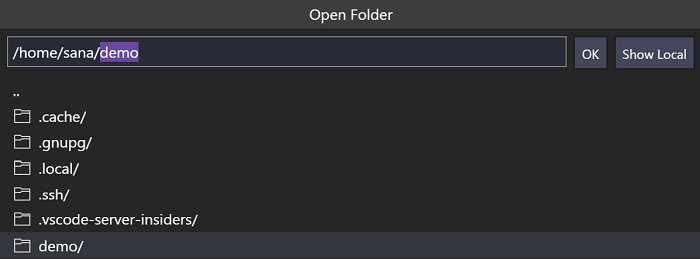

**Note: You need to replace the $USER with your actual username for the server and the remote-server with the server's hostname or the IP address. This will generate the SSH Config on your behalf and you'll be ready to go. If you're going to use ssh-keys please use the following: In Visual Studio Code open the Palette using F1 (for macOS Ctrl+Shift+P or Command+Shift+P) and select Remote-SSH: Connect to Host.Once you can confirm that the connection from the ssh-client is working you can go ahead and open Visual Studio Code. If you haven't created any ssh-keys yet you can check this tutorialįirst, you can verify that you can access the server using an ssh-client and also make sure that your ssh-keys are copied to the remote server as well. I will recommend you using ssh-keys in order to use secure authentication and to make your general experience a lot better. If you already have an openssh-client and Visual Studio installed you can go ahead and install the Remote Development extension package. macOS 10.14+ (Mojave) SSH hosts with Remote Login enabled.Windows 10 / Server 2016/2019 (1803+) using the official OpenSSH server.ARMv7l (AArch32) Raspbian Stretch/9+ (32-bit).On the Remote server you need to have an SSH server

On your Local machine you need to have a supported OpenSSH compatible SSH client A few examples are the Remote SSH, SSH FS, Remote X11 Prerequisites and System requirements

However, you are free to use other extensions as well. I find it really easy to use and it was also quite simple to configure it as well. I personally use the Remote Development extension.

There are several extensions that will help you to achieve this. If you run multiple servers and you do not want to edit files and open folders using ssh client and text editors like vim, vi or nano and you want to take advantage of all the features of Visual Studio Code then this tutorial is just for you.


 0 kommentar(er)
0 kommentar(er)
